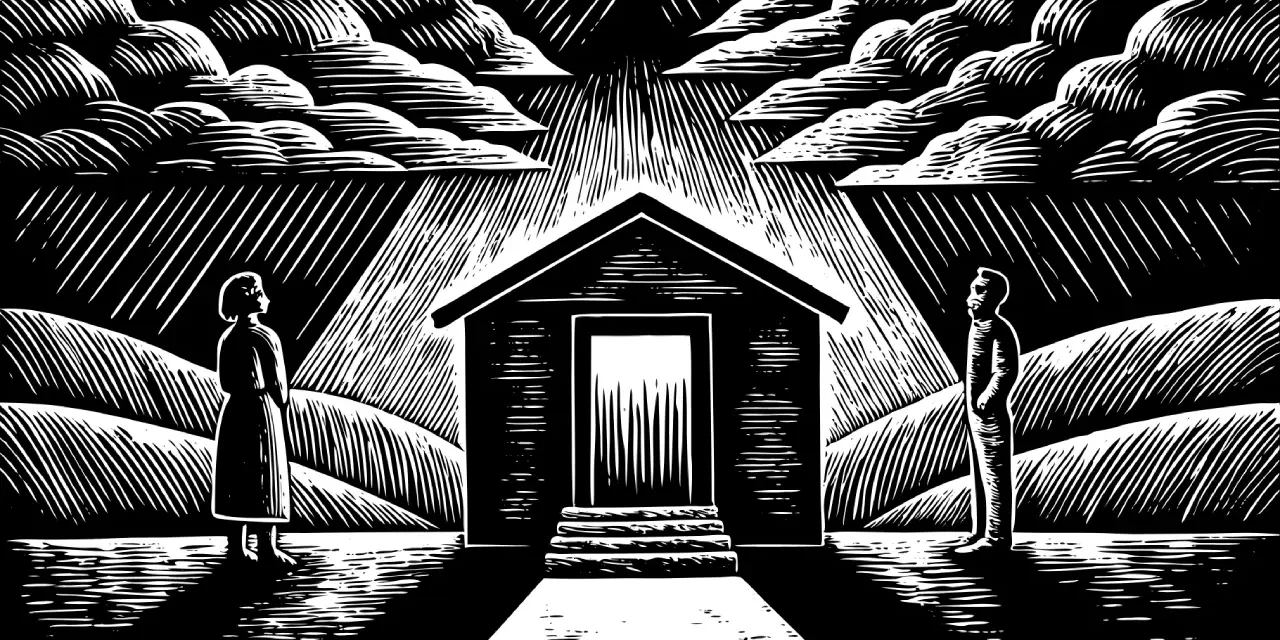In an age of relentless consumption and digital clutter, the act of downsizing is often misunderstood. It’s seen as austerity, self-denial, or a concession to failure. But to those who look deeper—into literature, philosophy, and cultural traditions—downsizing reveals itself as a calling, even a liberation. Few works illustrate this better than Ursula K. Le Guin’s The Dispossessed, a novel that, when paired with real-world aesthetic and spiritual traditions like Japanese minimalism, reimagines what it means to live fully by living with less.
In The Dispossessed, Le Guin gives us Anarres, a desolate moon colonized by anarchists who have renounced the capitalist values of their parent planet, Urras. On Anarres, there is no private property. Language itself is constructed to remove possessiveness; instead of “my bed,” people say “the bed I use.” The planet is materially poor but rich in communal spirit and existential clarity. The people of Anarres are not simply surviving without possessions—they are thriving by shedding them.
This is not unlike the ethos of wabi-sabi and ma in Japanese philosophy. Wabi-sabi finds beauty in imperfection and transience, while ma refers to the space between things—a celebration of emptiness as presence. The Japanese tea ceremony, for instance, is a practice of extreme simplicity, where every movement, every object, and every silence is imbued with intention. There is no excess, and in that absence, a deep presence emerges.
Shevek, the protagonist of The Dispossessed, is a physicist who must navigate the tension between the frugal utopia of his home world and the seductive, gilded structures of Urras. His journey is not just political but spiritual: “You can’t buy the revolution,” he says. “You can’t make the revolution. You can only be the revolution.” This insight echoes the Zen concept of zanshin—a state of relaxed alertness and inner awareness that is cultivated through discipline and the removal of distraction. Downsizing, in this context, is not renunciation but focus.
Where Anarres is raw and institutional in its minimalism, Japanese aesthetics tend toward refinement. Yet both traditions share a recognition that possessions are not neutral. They are psychic anchors, distractions from inner work, distortions of identity. Downsizing is a radical act precisely because it challenges the dominant values of material accumulation and individualism. It demands an answer to the question: Who are you when you no longer own?
Modern movements like Marie Kondo’s KonMari method, which encourages us to keep only what “sparks joy,” can be seen as diluted commercial echoes of these deeper traditions. Yet even they point to the same yearning—a desire to peel away the noise and rediscover what matters. Downsizing becomes a form of narrative editing: we remove what no longer serves the story of our lives.
Crucially, Le Guin does not portray Anarres as a utopia. Its people suffer from conformity, bureaucratic inertia, and ideological rigidity. Japanese minimalism too has been critiqued for aestheticizing poverty or masking social constraints. The point is not that downsizing is a cure-all, but that it invites an ongoing practice of reevaluation. Like Shevek’s journey, it is a recursive act—of returning again and again to the question of what to keep, and what to release.
In the end, downsizing is not about loss. It is about the freedom of becoming unburdened—from things, from roles, from systems of value we never chose. As both Le Guin and Japanese tradition teach us, the empty space is not a void. It is where truth echoes.







